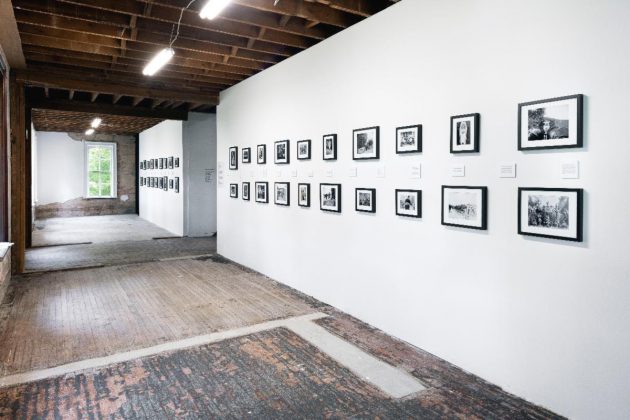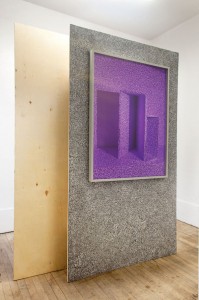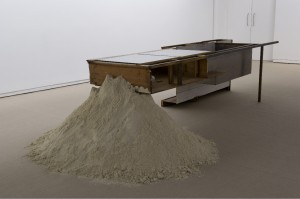The Poor Farm has played host to several residencies since its inception, including Summer School (2008-2019), Living Within the Play, and Living Within the Play Nido
For information please contact poorfarmliving@gmail.com
The Poor Farm has played host to several residencies since its inception, including Summer School (2008-2019), Living Within the Play, and Living Within the Play Nido
For information please contact poorfarmliving@gmail.com
Current Exhibition: Katharina Grosse and Iñigo Manglano-Ovalle


Model Home: After Wisconsin Death
August 19, 2022 - August 10, 2023
Peggy Ahwesh
Nuotama Bodomo
Francisco Goya
Dorothea Lange
Louise Lawler
Diane Nerwen
John Schabel
Charles Van Schaick
Peter Scott
Phil Vanderhyden
They were trying to save their souls- and who but a fool could fail to see that all that was the matter with their souls was that they had not been able to get a decent existence for their bodies? Upton Sinclair, The Jungle, 1906
Buried beneath the perpetually renewable culture wars, America's class divide has become an abyss. Reducing political agency to a color-coded map, cable TV pundits hammer away at crude, imaginary borders between the red and the blue, while regularly decrying the polarized state of the nation.
Despite obvious links between one’s economic circumstances and their political interests, an ever widening income gap affecting millions of people from across the political spectrum is largely ignored in favor of endless coverage of the fireworks between the two major parties. With no identity to speak of, those marginalized by economic policies that fail to serve their interests are left to fend for themselves, fomenting an alienation from the political process which represents a far more likely source of America’s polarization.
In an apparent backlash against the progressive economic reforms of the New Deal period, the American media and political classes often rely on punitive, Neo-Victorian austerity policies meant to “discipline” the underclass into accepting their plight. With human interest stories focusing on individual responsibility (read: fault) or condescending sentimentality over the failings of society as a whole, true reform or change is kept in check in favor of a perpetual affirmation of America’s mythological claims to a uniquely effective system designed to promote social mobility.
Owing their origins to British Utilitarian philosopher Jeremy Bentham, (the originator of the panopticon) poor farms in the U.S. can be traced to the “poor laws” of 18th Century England which led to the creation of a “total institution” affording complete control over a subject’s behavior in order to better institute social reforms. Recalling its original function as a site of domesticity, labor, and detention intended to “cure” social ills while reinforcing social hierarchies, Model Home addresses the practical and theoretical histories of the Poor Farm in Little Wolf, Wisconsin, treating the site simultaneously as a venue and actor in the theme of the exhibition. Model Home, (Part One), After Wisconsin Death Trip, incorporates material from Michael Lesy’s classic 1970’s era account of late 19th Century life in Black River Falls, Wisconsin, one hundred miles west of the Poor Farm. Combining photographs of local photographer Charles Van Schaick with contemporaneous news stories from the local paper, the Badger State Banner, Wisconsin Death TripOpens in a new window describes a small Midwestern town besieged by ongoing plagues and economic misfortune.
Incorporating photographs and newspaper accounts of tragic events from a town in crisis with images of everyday life as well as staged portraits, the wide-ranging nature of the material along with its parallels to the often morbid contents of today’s all-encompassing “24-hour news cycle” lends the historical origins of the texts and images a remarkable contemporary relevance.
Accompanied by historical and contemporary artworks that examine the intrinsic rapport between the daily news, morbidity, and an almost unconscious maintenance of class conditions, Model Home, After Wisconsin Death Trip aims to underline the key roles that locality, history, and mass media narratives might play in shaping our understanding of a particularly fraught moment in contemporary American life.











LIVING WITHIN THE PLAY
Since 2018, the Poor Farm hosts a long-term research residency called Living Within the Play. This residency explores the contingent nature of hosting and gathering, the fleeting and the reverberating, particular to the moment of temporary, intentional assembly. Using the “artist residency,” a reliably liminal site, as a platform for inquiry and play and party - the Poor Farm becomes a “stage” or “playing field” that can collapse forms from daily life, the studio and the event to produce a living and working space that builds on the natural byproducts of this shared experience (responsiveness) towards a cumulative public occurrence (resonance). This project is coordinated by Mark Jeffrey (Chicago, IL), Kelly Kaczynski (Chicago, IL), Kelly Lloyd (London, UK) and Shannon Stratton (Chicago, IL).
2022 will launch the Poor Farm's sister Living within the Play residency in the Umbrian hill town of Monte Castello di Vibio, Italy.
Working Group for Unmaking: Living Within the Play is produced by Kelly Kaczynski and Shannon Stratton. As the Poor Farm’s Artistic Director for this project, Stratton has been developing the Working Group for Unmaking as a framework for addressing the “artist residency” and the Poor Farm as “host” as a malleable material to explore gathering, praxis, and anti-institutional approaches to art research and production.

With an ear toward political engagement, “Listening and Making Sound” was a departure from the Poor Farm’s tradition programing built on focused solo projects. The artists invited to the Poor Farm in 2015 have, by necessity or choice, worked in the spaces between artist and activist. They have been nurtured within and by communities: the San Francisco lesbian community of the early nineties, punk and riot grrrl in Olympia, Jacmel, Haiti’s artists and poets, Act Up in NYC in the 1980’s. Before thinking in terms of a detached audience or critical judgment, these artists were performing in basements, attending consciousness-raising meetings, and listening to poetry readings in dance clubs. (The refashioning of the self in listening.) This urgent thematic group exhibition was guest-curated by artists Molly Zuckerman Hartung and Nicholas Frank, and included work by госкино, Tracy + the Plastics, Cary Cronenwett, Cauleen Smith, Gregg Bordowitz, Amy Yao, Joshua Ploeg, Kirsten Stoltmann, Poncili Creación, Microlights, Dana DeGiulio, Bryan O’Keefe, and Danny Giles. This exhibition was accompanied by an artist publication.

Nelly Agassi
Cargo Space and Bad at Sports
Sara Caron
Abigail DeVille
Drawing Center's Open Sessions
Assaf Evron
Nicholas Frank
Lise Haller Baggesen
Lifetime Achievement
Jacob Lillemose
Microlights
Henrik Plenge Jakobsen
Maddie Reyna and Levi Budd
John Riepenhoff and Richard Galling
Marko Spalatin
Mark Tobey
Amikam Toren
Aaron Van Dyke and Summer School
Steve Wetzel
Jonathan Williams
Molly Zuckerman-Hartung
Henrik Plenge Jakobsen new-commissioned exhibition at the Poor Farm Experiment is named “Divorce” which will be an installation that spans over to rooms with sculptures and videos that draws from the aesthetics of European and African folk traditions that evokes scenery between animistic rituals and ludicrous gestures, and a sculptural and performative exercise into form and anti-form.
The Danish artist Henrik Plenge Jakobsen examines the effects of political, economic and social structures on our lives. For him, art and reality are not separate fields that can be temporarily merged with each other. Art rather represents one of these realities, from which our own reality is comprised. Henrik Plenge Jakobsen was born 1967 in Copenhagen where he also lives. Plenge Jakobsen had solo presentations at Portikus, Frankfurt, Kunstverein Düsseldorf, The National Gallery in Copenhagen and The Suburban in Oak Park.
Molly Zuckerman-Hartung’s “Packing My Library 2014-2015” evokes Walter Benjamin’s “For what else is this collection but a disorder to which habit has accommodated itself to such an extent that it can appear as order?" For the next year Zuckerman-Hartung’s library will reside at the Poor Farm where she hopes to learn more about her books through their absence.
Open Sessions at The Drawing Center is a two-year platform for dialogue, open to artists working in a variety of disciplines and offering exhibition opportunities at The Drawing Center and other venues. Over the next two years a rotating selection of work by artists participating in Open Session will be presented at The Poor Farm.
Assaf Evron is presenting a photographic installation based on infrared kinect sensor light. Evron's purple images offer a seductive visual experience and a conceptual engagement in the history of painting, metaphors of vision and the optical apparatus.
Amikam Toren will have a ‘remote composition’ built on site, from his ongoing Stacks series. The Poor Farm Stack will be a provisional cardboard-box sculpture derived from the standard shipping symbols. And Abigail Deville’s accretive installation in the Poor Farm basement, begun in the summer of 2013, will remain on view.
Summer School is an informal gathering of students, faculty and artists exploring experimental forms of dialog and education. It resides within the opening weekend of the Great Poor Farm Experiment each year.
Nelly Agassi will adapt her I’m the One performance, originally developed for the 2010 No Soul For Sale exhibition at Tate Modern, for the Poor Farm. Agassi gives away t-shirts printed with the phrase I’m the One in white-on-white, rendering each person who takes one simultaneously a self-aware individual and a member of a subtle collective identity.
Steve Wetzel will screen a single-channel video shot in Cuyuna, MN, about a wood tick festival where hundreds of wood ticks are collected and raced as part of a dynamic, annual convivial social performance in the heart of the nation’s once-thriving iron ore industry. A related installation will comment on the Poor Farm’s existence as a sometimes-lonely, sometimes socially burgeoning locale, and the passage of real time in representational space.
Levi Budd and Maddie Reyna will collaborate in a site specific, permanent intervention wherein a text will be carved into a tree on the site of The Poor Farm. The instrument used will be left implanted in the tree, causing permanent modification in its growth.
John Riepenhoff and Richard Galling will be hosting their annual “Lazy River, Keep Showing Me Your Rafts,” a raft building competition and float down the Little Wolf River.
Lifetime Achievement is a pedagogical platform based in Milwaukee, WI. Programing at the Poor Farm will include: an obstacle-course group show, poetry reading/campfire-building workshop, and an outdoor screening by Microlights, a neighborhood cinema based in Milwaukee.
Sara Caron will operate Poor Store out of a canvas tent. It will sell all the essentials for a weekend of Poor Farm camping: Things in years past I've forgotten at home or wished I had: beer, rain ponchos, snacks, inner tubes, bait for fishing etc.
On Saturday, August 2nd, 2014 The Great Poor Farm Experiment presents a special preview of Lise Haller Baggesen’s book Mothernism, due for release in October of 2014. For this Saturday afternoon, Baggesen will present sections of her forthcoming book, while discussing the project from inception to print. Advance copies of this lush, full-color edition designed by Sonnenzimmer will be available.
The Poor Farm will present Guillaume Leblon at NADA COLOGNE
April 18-22, 2012
Hall 11, Cologne-Deutz Exhibition Centre
Koelnmesse GmbH
Messeplatz 1
Cologne 50679
Germany
